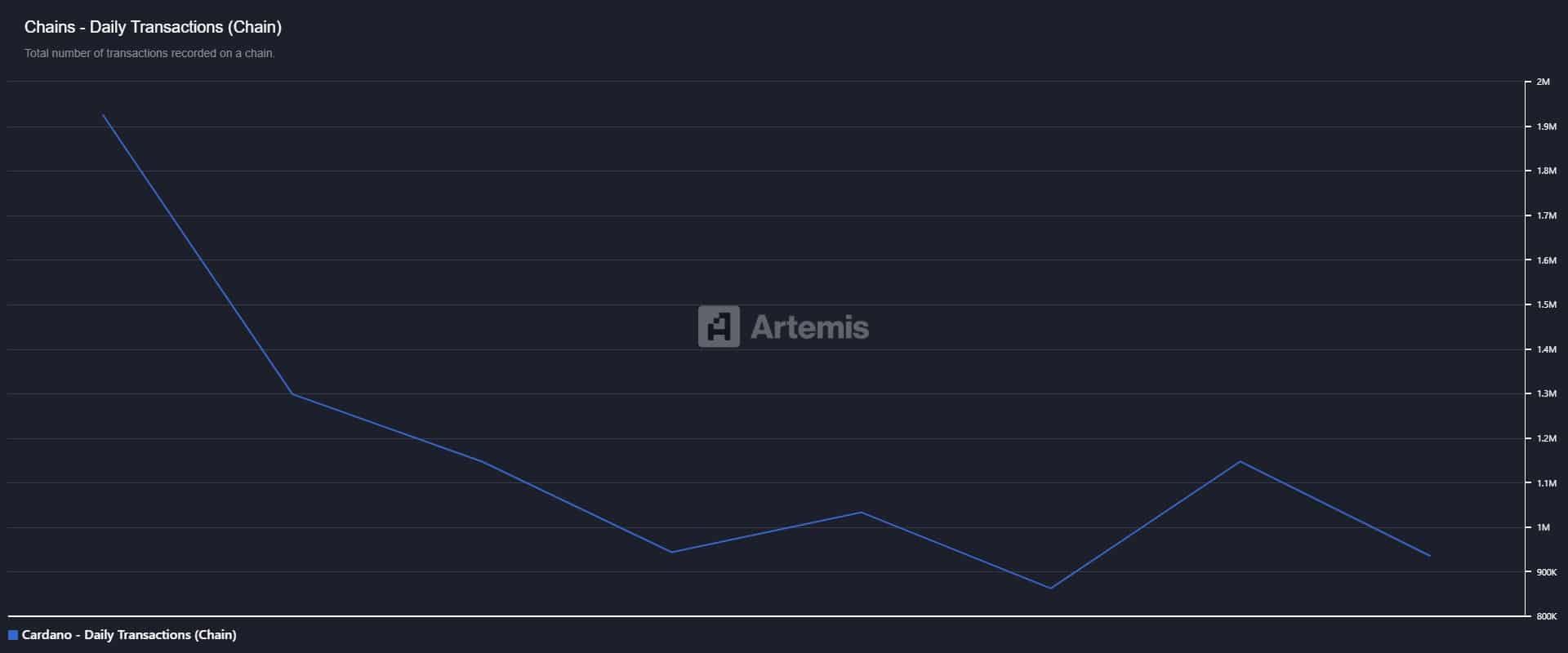Cardano Q3 Gains May Mask On-Chain Slump, Chainlink Integration Could Shape ADA’s DeFi Outlook
Contents
Chainlink integration on Cardano would provide reliable oracle data that can unlock DeFi growth, reduce oracle development costs, and improve TVL recovery; however, technical adaptation and commercial terms are key hurdles that currently delay broad DeFi adoption on Cardano.
-
Cardano rallied ~40% in Q3 but on-chain activity and TVL lag behind price gains.
-
Delayed Chainlink integration raises costs for reliable oracle data and slows DeFi launches.
-
Derivatives flows and open interest spikes show price volatility disconnected from organic usage.
Cardano Chainlink integration: urgent for ADA’s DeFi recovery — learn how oracle costs, TVL, and developer tools matter. Read on.
What is the current Cardano on-chain vs price divergence?
Cardano shows a pronounced divergence: ADA climbed roughly 40% since Q3 began while core on-chain metrics lag, indicating price strength is not matched by ecosystem activity. Daily Active Addresses and Total Value Locked (TVL) have contracted, revealing limited DeFi traction despite bullish price action.
How has ADA price moved and what on-chain signals matter?
ADA posted three consecutive monthly gains and rallied ~40% off a $0.57 base in Q3. Yet Daily Active Addresses reportedly dropped sharply over three months and TVL has fallen to about half of the $721 million peak reported during the election run, signaling weaker protocol-level usage.
Derivatives amplified volatility: on August 18 ADA reached $0.96 while Open Interest (OI) hit $1.87 billion, then retreated to $0.80 with OI easing to $1.54 billion by press time. These flows suggest speculative positioning contributed to the price move more than organic DeFi demand.


Source: DeFilLama
Why does Chainlink integration matter for Cardano?
Chainlink integration matters because reliable oracle data is a foundational service for smart contracts in DeFi — price feeds, randomness, and external state. Cardano’s architecture (Plutus smart contracts, Ouroboros consensus) requires custom adapter work to consume Chainlink oracles, increasing development complexity and cost.
Charles Hoskinson has publicly commented on commercial terms around oracle integration, noting price expectations for integration and emphasizing strategic value. That commercial friction has delayed widespread oracle adoption on Cardano and slowed new DeFi launches.


Source: Artemis Terminal
How would Chainlink affect Cardano DeFi metrics?
By lowering bespoke oracle development needs, Chainlink could accelerate DeFi launches, attract liquidity, and support composable protocols. For context, competing ecosystems powered by Chainlink data gained sizable TVL inflows recently (nearly $10 billion in August for referenced EVM ecosystems), widening the gap versus Cardano.
Frequently Asked Questions
Will Chainlink integration immediately increase Cardano TVL?
Not immediately. Chainlink provides tools to reduce oracle development cost and complexity, but TVL increases require developer adoption, competitive products, and attractive yield opportunities. Integration is a key enabler, not an automatic TVL multiplier.
How long could integration take on Cardano?
Integration timelines depend on the scope: simple price feeds may take weeks to months; full-featured oracle networks with redundancy, staking, and cross-chain bridges will require longer coordination and testing. Commercial negotiations can also extend timelines.
Key Takeaways
- Price vs activity divergence: ADA rallied ~40% in Q3, but Daily Active Addresses and TVL lag behind, signaling weak on-chain engagement.
- Oracle bottleneck: Lack of easy, affordable oracle access raises costs for DeFi projects and slows launches on Cardano.
- Integration is strategic: Chainlink could unlock new DeFi flows, but technical adapters and commercial terms must be resolved first.
Conclusion
Cardano’s recent price strength has not yet translated into sustained DeFi activity. Chainlink integration offers a clear path to improved oracle access, reduced developer friction, and potential TVL recovery — but success depends on technical adaptation, cost alignment, and developer momentum. Monitor on-chain metrics and integration milestones for signs of a durable breakout.
Crypto Vira
Comments
Yorumlar
Other Articles
Bitcoin Surges to $93,888: How Venezuela-US Tensions Triggered a Crypto Rally
January 5, 2026 at 07:04 AM UTC
AI Data Centers May Strain Water Supplies in US High-Stress Regions
January 1, 2026 at 08:17 PM UTC
BitMine Boosts Ethereum Stake to 461K ETH, Eyes Network Share Growth
January 1, 2026 at 08:06 PM UTC
